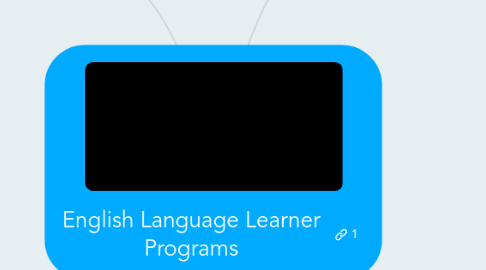
1. TESOL - Teach English to Speakers of Other Language
1.1. Includes five major components
1.1.1. Proficiency Standards Framework
1.1.1.1. Five language proficiency standards; include both social and academic uses of the language students must acquire for success in and beyond the classroom.
1.1.1.1.1. Standard 1: English language learners communicate for social, intercultural, and instructional purposes within the school setting.
1.1.1.1.2. Standard 2: English language learners communicate information, ideas, and concepts necessary for academic success in the area of language arts.
1.1.1.1.3. Standard 3: English language learners communicate information, ideas, and concepts necessary for academic success in the area of mathematics.
1.1.1.1.4. Standard 4: English language learners communicate information, ideas, and concepts necessary for academic success in the area of science.
1.1.1.1.5. Standard 5: English language learners communicate information, ideas, and concepts necessary for academic success in the area of social studies.
1.1.2. Grade Level Clusters
1.1.2.1. Reflects current educational configurations in the United States.
1.1.2.1.1. PreK- K
1.1.2.1.2. 1-3
1.1.2.1.3. 4-5
1.1.2.1.4. 6-8
1.1.2.1.5. 9-12
1.1.3. Language Domains
1.1.3.1. Listening
1.1.3.1.1. Active listening and purposeful listening skills
1.1.3.2. Speaking
1.1.3.2.1. Meaningful interaction with others.
1.1.3.3. Reading
1.1.3.3.1. Process, interpret, and evaluate written language, symbols, and text with understanding and fluency. Students with strong foundation in reading in their first language, readily transfer those skills in the process of learning to read in English.
1.1.3.4. Writing
1.1.3.4.1. Writing is used to express meaning through drawing, symbols, or text. English language learners may come with writing styles influenced by their home cultures.
1.1.4. Language Proficiency Levels
1.1.4.1. Level 1-Starting
1.1.4.1.1. Limited or no understanding of English.
1.1.4.2. Level 2-Emerging
1.1.4.2.1. Understanding of phrases and short sentences. Communicating limited information in simple everyday routines by using memorized phrases and groups of words. Producing basic errors.
1.1.4.3. Level 3-Developing
1.1.4.3.1. Understanding more complex speech but still may require some repetition. Students may have difficulty expressing all their thoughts due to a restricted vocabulary. Speak in simple sentences, and grammatical errors.
1.1.4.4. Level 4-Expanding
1.1.4.4.1. Adequate language skills for most day-to-day communication needs. Students may read with considerable fluencecy, but may not understand texts in which the concepts are presented in a decontextualized manner, the sentence structure is complex, or the vocabulary is abstract or has multiple meanings.
1.1.4.5. Level 5-Bridging
1.1.4.5.1. Students can express themselves fluently and spontaneously on a wide range of personal, general, academic, or social topics in a variety of contexts. They are poised to function in an environment with native speaking peers with minimal language support or guidance. Errors are minimal, difficult to spot, and generally corrected when they occur.
1.1.5. Background
1.1.5.1. Expand the scope and breadth of the ESL content standards by bridging them to specific core curriculum content areas, namely, English language arts, mathematics, science, and social studies
1.1.5.2. Use students’ first languages and cultures as the foundation for developing academic language proficiency
1.1.5.3. Provide an organizational structure that is synchronized with federal legislation.
2. References
2.1. Structured English Immersion Models of the Arizona English Language Learners Task Force. December 2014. Retrieved September 2016 from http://www.azed.gov/english-language-learners/files/2015/01/structured-english-immersion-models-revised-december-2014.pdf
2.2. Teachers of English to Speakers of Other Languages, Inc. 2006. TESOL Pre-K–12 English Language Proficiency Standards Framework. Retrieved September 2016 from http://www.tesol.org/docs/books/bk_prek-12elpstandards_framework_318.pdf?sfvrsn=2
2.3. NEA Priority Schools Campaign. January, 2012. English Language Learners: Culture, Equity and Language. Retrieved September 2016 from https://www.youtube.com/watch?v=5HU80AxmP-U
2.4. Tesolinc. June, 2015. A Teaching Tip from TESOL's president. Retrieved September 2016 from https://www.youtube.com/watch?v=MDA5hOyofaI
3. Structured English Immersion (SEI) in Arizona
3.1. SEI models are research-based and include three major components.
3.1.1. Policy
3.1.1.1. AZ Law requires schools to teach English.
3.1.1.2. AZ law requires materials and subject matter instruction to be in English.
3.1.1.3. Arizona law requires English language learners to be grouped together in a structured English immersion setting.
3.1.1.4. The goal is for ELLs to become fluent English proficient in a year.
3.1.1.5. Arizona law requires a minimum of four hours per day of English language development during the first year a pupil is classified as an ELL.
3.1.2. Structure
3.1.2.1. SEI Classroom content
3.1.2.1.1. Minimum of four hours daily of English Language Development (ELD).
3.1.2.1.2. The content of ELD emphasizes the English language itself.
3.1.2.1.3. ELD instruction focuses on phonology (pronunciation - the sound system of a language), morphology (the internal structure and forms of words), syntax (English word order rules), lexicon (vocabulary), and semantics (how to use English in different situations and contexts).
3.1.2.2. SEI Classroom Entry and Exit
3.1.2.2.1. SEI Classroom entry and exit is determined solely by Arizona English Language Learner Assessment (AZELLA) score.
3.1.2.2.2. Student's with AZELLA proficiency level scores; Pre-Emergent, Emergent, Basic, or Intermediate are be grouped in SEI Classrooms.
3.1.2.2.3. Students should take AZELLA at least 2 times a year, in the beginning of the school year and at the end of the school year, but no more than 3 times a year.
3.1.2.3. Student Grouping for SEI Classrooms
3.1.2.3.1. Elementary Schools
3.1.2.3.2. Middle Grades and High Schools
3.1.2.4. Teacher Qualification Requirements
3.1.2.4.1. Elementary School Teacher Qualifications
3.1.2.4.2. Middle Grades and High School Teacher Qualifications
3.1.3. Classroom Practices
3.1.3.1. SEI Classroom Language Use
3.1.3.1.1. Classes are taught in English
3.1.3.2. SEI Classroom Objective
3.1.3.2.1. Teach one or more specific identified skills within the English Language Proficiency Standards appropriate for the English proficiency levels of students in the class
3.1.3.3. SEI Classroom Materials and Testing
3.1.3.3.1. Aligned to the Arizona K- 12 English Language Proficiency Standards
3.1.3.4. SEI Classroom Instructional Methods
3.1.3.4.1. Aligned to the Arizona K- 12 English Language Proficiency Standards
3.1.3.5. Assessment
3.1.3.5.1. Aligned to the Arizona K- 12 English Language Proficiency Standards
3.1.3.6. SEI Teacher Training
3.1.3.6.1. Implementation Training
3.1.3.6.2. English Language Proficiency Standards Training
3.1.3.6.3. English Language Development Teaching Methods Training
